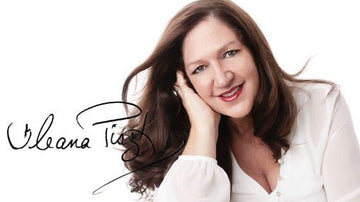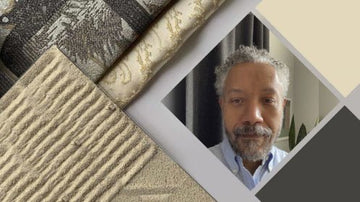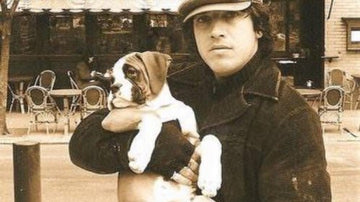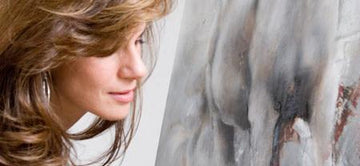Ileana Piszk Questions
"My pictoric work is like a mirror in the air where we can all see our reflection filled with color and love.”
By Shelly Stone
Ileana Piszk has had several professional lives throughout her life. As a sociologist and psychologist from the University of Costa Rica, she dedicated several decades researching human behavior. She also immersed herself in clay as a ceramist creating functional and artistic pieces.
Currently residing in Escazú, Costa Rica, she finds inspiration from her balcony as she looks at the Central Valley every morning. Ileana has been a visual artist for the last 25 years specializing in acrylic paint and printing. Once a student at the "Bellas Artes" Institute in Costa Rica, she has worked closely with renowned artists.
Her art is exhibited individually at eight venues recognized nationally and internationally and in over 100 collective exhibits at museums and art galleries around the globe. She has been writing for several years and enjoys every letter and image by trying to grasp dreams and memories and then turning them into fiction. Keep reading to learn more about this fantastic artist featured in FOUND by Robert Allen
What was life like when you were growing up?
I grew up in San José, Costa Rica, with beautiful landscapes and incredible sunsets every afternoon. Surrounded by all kinds of greens, the valley's mountains always seemed clean after a rainstorm. During vacations, I traveled very often to the beaches and enjoyed everything the tropical environment provided to all my senses. My childhood was happy, with an excellent education and universal and spiritual values that have always been with me throughout my life.
When did you know that you would pursue art as a career, not just a passion?
My first University degrees were in Social Sciences. I worked in those fields for part of my life, but I was influenced by poetry and music since I was very young. My mother was a well-known writer, and she was a significant influence on me. Her poetry had plenty of landscape imagery with lots of lyrical content. I think I grew up surrounded by art.
I have taken all of my professional experiences, from human behavior to visual art, very seriously. To me, it's a continuum of passion and discipline. At 45 (I'm 66 now), I decided to switch to visual arts after living through a disease. I studied different techniques: acrylics, ceramics, printing, oil, and three years later, I had my first art exhibit.
Who is the artist that inspires you most?
I would say that Goya inspires me because he transforms the light into beautiful scenes and is very passionate about life as it was in his time.
Do you schedule a specific time to create art, or do you create when inspiration strikes?
I don't wait for inspiration to come; I work during specific times in my studio, sometimes studying different artists, making sketches, or moving my hand, heart, and brain. Inspiration comes while working.
What work do you enjoy doing the most?
Without any doubt, I enjoy painting. I love painting landscapes of the sea, forest, and urban themes. I love catching the light and the contrasts of the environment in my paintings.
What themes do you pursue? What do you want art to say?
I go with landscapes. Sometimes the landscapes include people. As human beings, we are co-creators of the Universe, and for me, every day is an opportunity to recreate life as it comes, with its different colors, hues, and flows. I'm not a realistic artist. My paintings come from my feelings and from the gratitude of being alive. I want my work to bring light and good energy to others.
What's your favorite piece that you created?
It's difficult to say, but I can tell that "Arbol de la Vida" is one of my favorites. It talks about the power of nature and the power of femininity.
What jobs have you done other than being an artist?
- Teacher
- Researcher in Sociology
- Psychologist
- Mother
- Grandmother
What memorable responses have you had to your work?
I enjoy seeing the happy faces of people who want the piece in their house.
I had the honor of illustrating a poem written by my mother in an exhibition called "Identity and Diversity" in Argentina and then iterated all over the continent. Currently, the poetry and its illustration are part of a collection in the Dallas Museum.
For my last exhibition in "Museo de Cartago," I was invited by the Embassy of Israel to represent them through my art in the context of the Costa Rican Bicentennial.
Where do you find inspiration?
I am inspired by music, meditation, my grandchildren, the landscape, and flowers.
"I think that I'm in love with life."
What is your dream project?
To have the opportunity to keep painting and producing is very important. But also to spread my message of light and colors abroad in galleries and well-known museums.
What's the best piece of advice you've received?
Not to fall in love at first sight with one work. It's better to receive a "no" than be pleased with mediocrity.
If you could go back in time to tell your younger self anything you learned along the way, what would it be?
I would say to myself to be calm and have patience. I struggle with that every day, but I've learned that you must have a "pause" in art.
Have you ever said "no" to an opportunity? How did you decide to say no?
A few years ago, I finished a painting for a contest in my country. Some clients came and wanted to buy the piece. I said no, and I didn't win the contest.
How would you describe your brand?
with every stroke and in every detail, your soul is manifesting its effort and emotions.
What were you thinking about when you created "Aventureros"?
I was thinking about friendship and comparing it to the horizon that never ends; you don't know where the next port will be. It's my metaphor.

(Ileana Piszk. Aventureros. 2020. Acrylic over Canvas, Braced in Wood. 43.3 in. x 45.27 in.)
What was your inspiration behind De la Esperanza?
The people who travel downtown from places far away from their homes must hurry every day to sustain their families.

(Ileana Psizk. De la Esperanza. 2020. Acrylic over Canvas, Braced in Wood. 39 in. x 59 in.)

(Ileana Piszk. Corales. 2020. Acrylic over Canvas, Braced in Wood. 43.3 in. x 51.18 in.)
Will you go into deeper details about the difference and the story behind “Corales and Corales 1”?
Both Corales' are metaphors of going inside oneself as if we were an ocean. I think Corales and Corales 1 are sequences of moving inside the sea. In Corales, maybe a small fish was moving very fast, creating bubbles, and in Corales 1, the fish escaped, and the water rested a little more.

(Ileana Piszk. Corales 1. 2020. Acrylic over Canvas, Braced in Wood. 43.3 in. x 47.24 in.)
Thank you for the opportunity for this interview; thanks to Galeria Valanti. I hope we have a lot of success and can work together for a long time.





